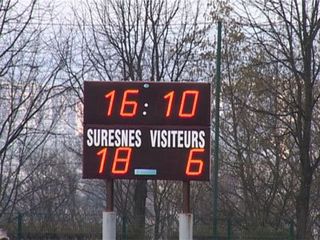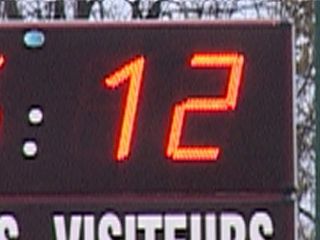Sony and JVC Take Different Tacks in the High-End Camcorder Gamut
Focus And Zoom
In 4:3, DV mode, the Sony camcorder offers a wider field of vision with a focal length of 43.2 mm in 24x36 as compared with 56.5 mm for the JVC, which falls very far short of being wide-angle. But the GR-PD1 has the advantage in its 25p mode at 40.3 mm. However, Sony's optical zoom covers a focal length that is slightly greater with a 12x ratio that is switchable between two speeds (fast or slow) as compared with a 10x ratio for the JVC. The digital zoom continues the trend with a variation of 48x in the Sony and 200x in the JVC. Remember that digital zoom does not do too much for the image because it enlarges the pixels and thus causes some deterioration to quality. The images taken with the DCR-VX2100 below illustrate this phenomenon:


Click here to see a video of the Sony DCR-VX2100 zoom.
Click here to see a video of the JVC GR-PD1 zoom.
Sensitivity: advantage Sony
The DCR-VX2100 is classified as the most sensitive camcorder on the mass market, to the point where this has become its main selling point. Once again, the lux thresholds announced by the manufacturers are meaningless. JVC and Sony both claim a threshold of 1 lux for their camcorders, but the resulting image contradicts this data. In low light, the GR-PD1 is soundly beaten. Its colors soon fade. The DCR-VX2100 not only reproduces the subject but also has a manual control that artificially increases brightness to up to +18 dB. The images below speak for themselves:
| Row 0 - Cell 0 | Sony DCR-VX2100 | JVC GR-PD1 |
Stay on the Cutting Edge
Join the experts who read Tom's Hardware for the inside track on enthusiast PC tech news — and have for over 25 years. We'll send breaking news and in-depth reviews of CPUs, GPUs, AI, maker hardware and more straight to your inbox.
Most Popular

